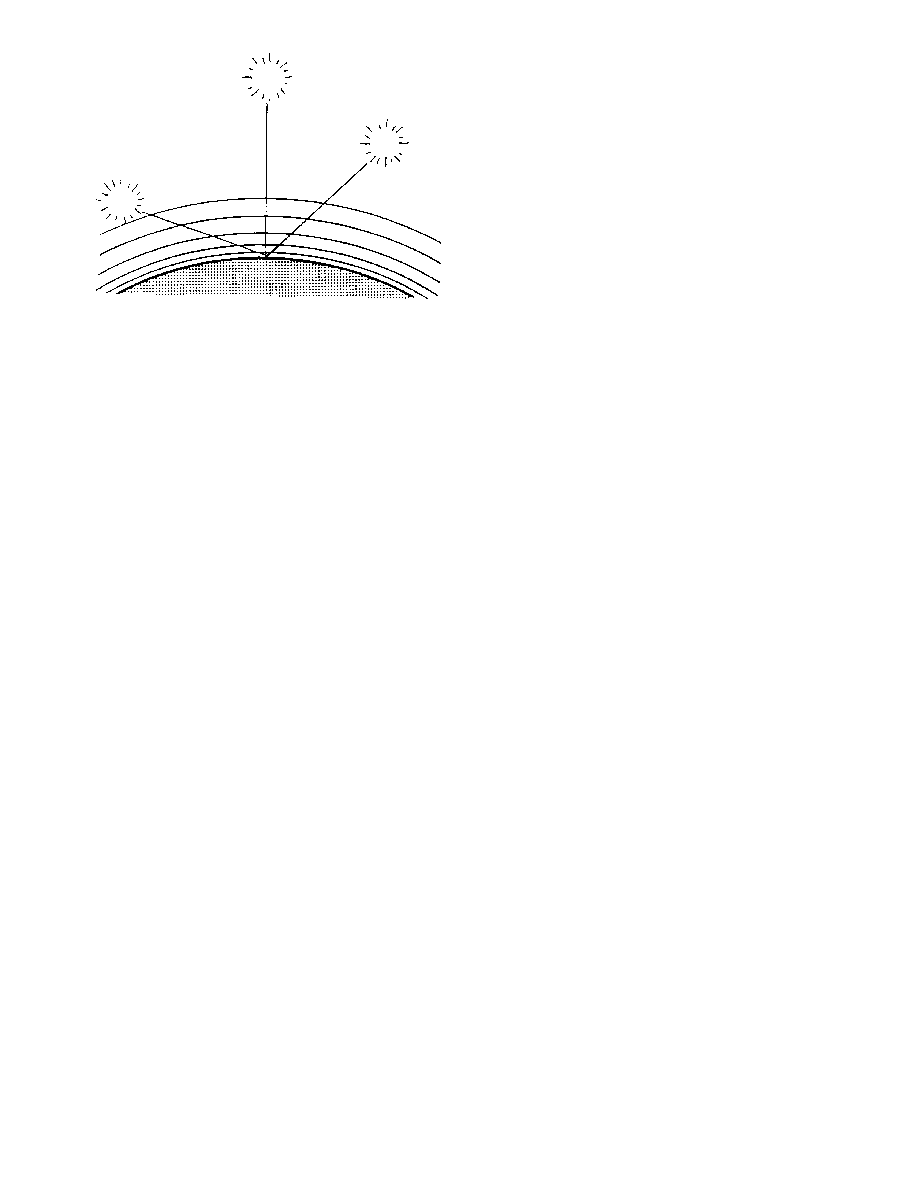
DOFMaster
for Windows
On-line
Depth of Field
Calculator
DOFMaster for Mobile Devices
On-line
Depth of Field
Table
Hyperfocal
Distance Chart
Articles
FAQ
Recommended
Books
Support
Contact
Links
Home
for Windows
On-line
Depth of Field
Calculator
DOFMaster for Mobile Devices
On-line
Depth of Field
Table
Hyperfocal
Distance Chart
Articles
FAQ
Recommended
Books
Support
Contact
Links
Home
As an Amazon Associate I earn from qualifying purchases.
![]()
sun.
atmosphere through which sunlight passes (fig. 1-12).
longer wavelengths. The color composition of sunlight
becomes increasingly deficient in blue the further the
light has to travel through the atmosphere (early
morning and late afternoon). As the sunlight becomes
amount of scattering also depends on the condition of
the atmosphere. When the atmosphere is clean (has little
moisture or fine dust in it), there is less scattering than
when the atmosphere is hazy or dirty (having a good deal
color of sunlight can be expressed as color temperature.
Sunlight coming from overhead on a clear day has a
color temperature of about 5400 K. Just after sunrise and
but the intensity is also less. These arc important
considerations when taking pictures at these times of
Skylight is different than sunlight because it is caused
chiefly from the scattering of the shorter wavelengths.
It therefore appears more blue than sunlight. Skylight
direction, quality, and strength of the light. You can
move these light sources around, diffuse them, or reflect
them. You can alter their intensity to suit the situation.
concentrated beam of light. Floodlights give diffused,
softer, more even, spread out light. You can add to these
two basic types of artificial light sources. By using
lighting accessories, such as reflectors, barn doors,
diffusers, and snoots, you can control the light to provide
a variety of lighting effects.
should not be mixed (used together). When you are
viewing a scene, your eyes adapt so color differences
between two or several light sources are minimized.
Color film, however, cannot adapt and shows the color
difference in parts of the scene illuminated by different
light sources.
for 3200 K or 3400 K. Tungsten lamps, operated at their
rated voltage, produce light of 3200 K and 3400 K. The
color temperature of tungsten lamps changes with
voltage fluctuations, decreasing with lower voltage and
increasing with higher voltage. For example, the color
temperature of a tungsten lamp rated for operation at
as low as 50 K can be noticeable on subjects with
important neutral areas, such as white and light shades.
power being drawn on the same circuit. When possible,
you should avoid having other equipment on the same
circuit. For these lamps to produce light of the correct
color, they must be operated at exactly their rated
voltage. When it is not possible to operate the lamps at
their proper voltage appropriate filters can be used to
correct the color of the light reaching the film.
Basic Photography Course

As an Amazon Associate I earn from qualifying purchases.
WWW.DOFMASTER.COM
© 2006 Don Fleming. All rights reserved.
© 2006 Don Fleming. All rights reserved.